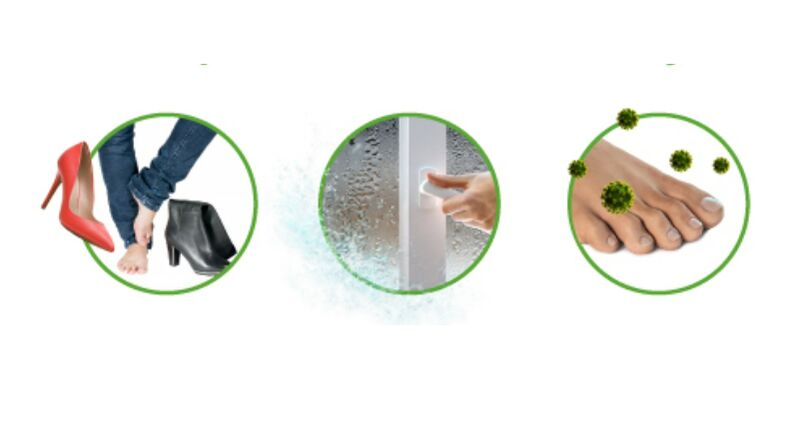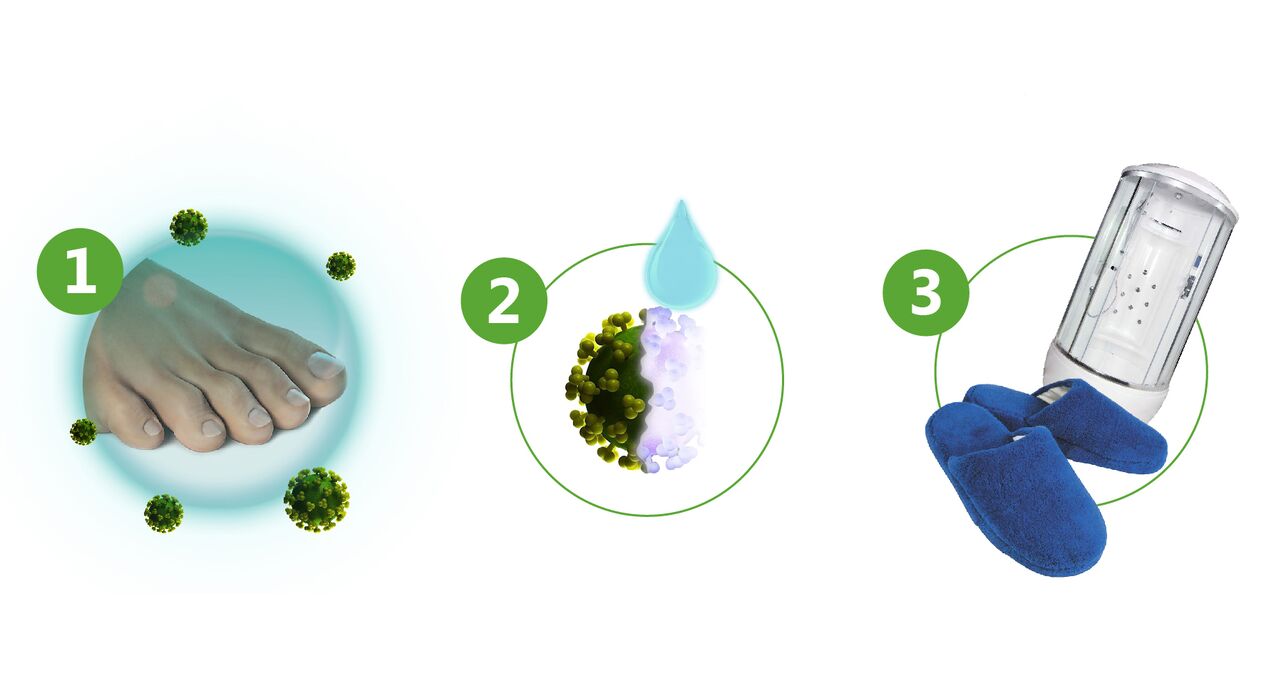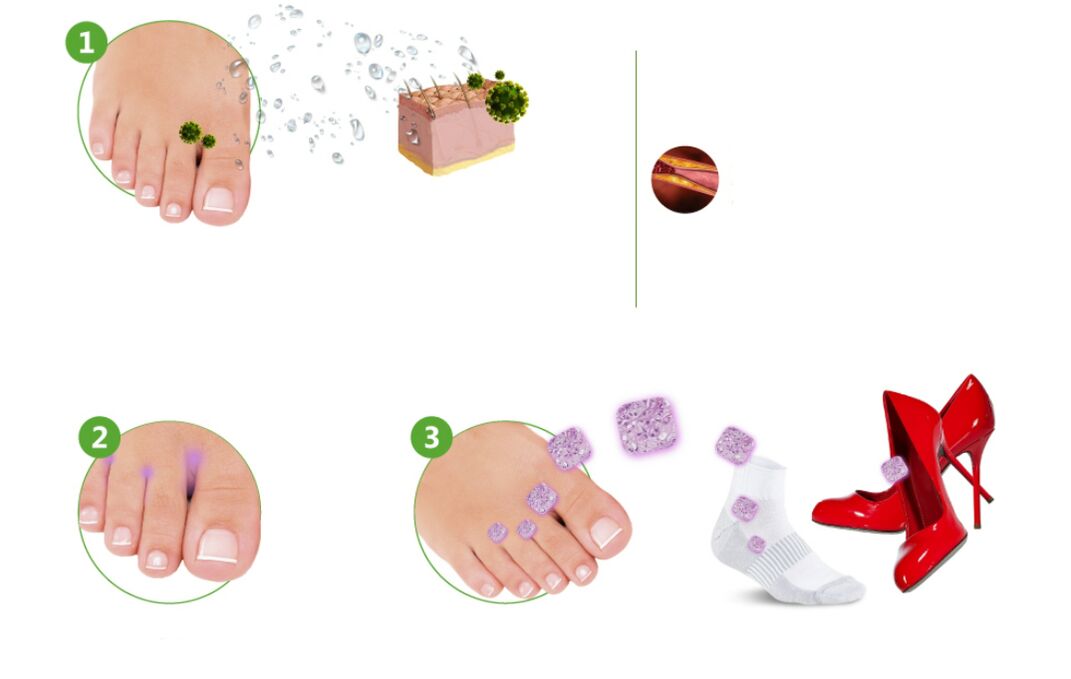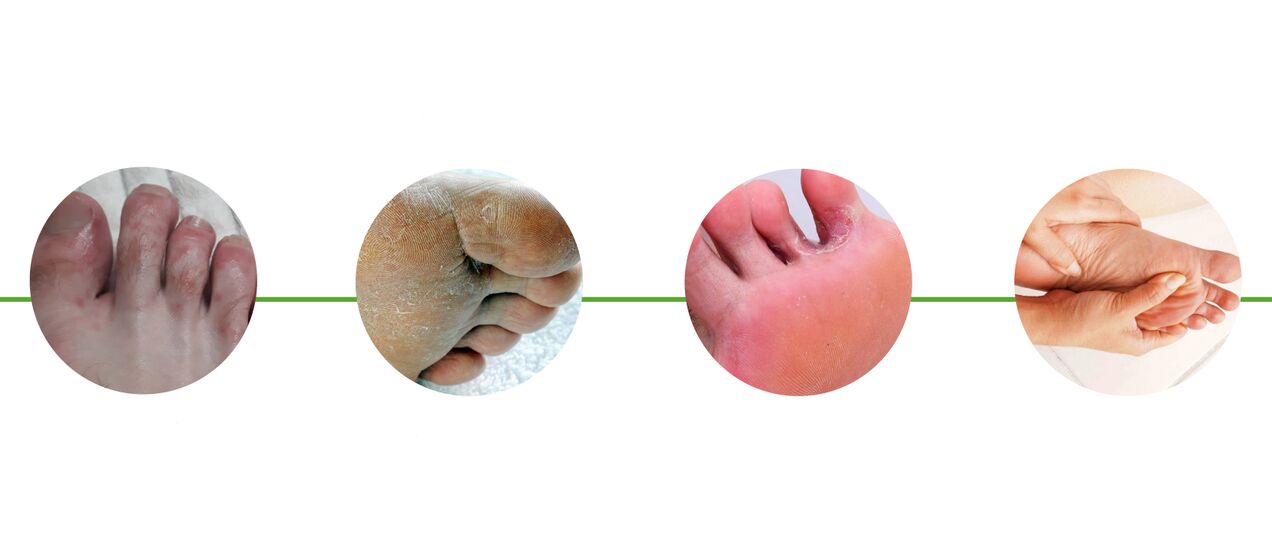One of the most common skin diseases is athlete's foot. Occurs in people of all ages and professions. The highest prevalence of mycosis is in workers in hot shops, miners, athletes, bathroom workers, in whom the incidence exceeds 60%. Children suffer quite rarely, but already in adolescents there is an increase in cases of mycosis.
What is foot fungus
Foot mycosis is a group of fungal skin diseases, often with concomitant nail damage. These infections cause similar clinical manifestations. They can be detected only after microscopic examination of the skin and nails. Mycosis of the skin of the feet is a highly contagious disease. It is transmitted from person to person through household items: carpets in changing rooms, showers and pools, benches, tubs and floors in baths and saunas. It is dangerous to use shared shoes and socks. The surface layer of the skin, which is constantly exfoliating, contains many fungi and their spores. Initially the interdigital folds are affected, itching of the skin appears. In the future, the infection spreads all over the foot and spreads to the nails. The course of the disease is long, requires continuous treatment. To prevent foot fungus, you can buy an effective prophylaxis.

Causes of foot mycosis
The cause of the disease are microorganisms of the genus Trichophyton, less commonly fungi and Epidermophyton floccosum:

- red trichophyton (Tr. Rubrum) causes up to 95% of all cases of the disease;
- about one-third of patients also found interdigital trichophyton (Tr. interdigitale);
- inguinal epidermophyton (E. floccosum) is the cause of the disease in 1% of cases.
The possibility of infection increases in adverse external conditions:
- high humidity;
- tight shoes;
- frequent visits to swimming pools, saunas and other humid areas;
- the presence of a sick person in the family.
Some internal diseases also contribute to the development of a fungal infection:
- foot sweating;
- lack of immunity;
- taking corticosteroid hormones inside;
- flat feet;
- Raynaud's disease, peripheral artery atherosclerosis, disappearing endarteritis, varicose veins;
- diabetes.

What happens during the illness
Foot fungus on healthy skin rarely develops. Even if the fungus enters the surface, it will not be able to penetrate the thick layer of intact epithelium. Under the influence of unfavorable external factors, the epidermis accumulates moisture and is released. The fungus penetrates the thickness of the skin and begins to actively multiply. This is further triggered by vascular diseases and immune disorders, which are accompanied by malnutrition and local defense mechanisms of the legs. Fungal reproduction causes damage to the interdigital areas, hard skin and discomfort. The rejected epithelium enters the socks and shoes, becoming a source of re-infection. Therefore, when treating mycosis, it is necessary to treat the inner surface of the shoe with a preparation with a special anti-fungal composition.

Symptoms
Conventionally, there are such forms of foot fungus, which are shown in the picture:
- Squamous: unilateral skin and slight itching in the arch of the foot. This form is often not recognized.
- Intertriginous: the folds between the toes are affected, then the process moves to the back of the foot. Crying cracks appear, accompanied by itching. A bacterial infection may be associated with the development of erysipelas.
- Dyshydrotic: in the arch of the foot, the vesicles coalesce with each other with light, and then with turbid contents. They open with the formation of painful erosions. This type is accompanied by itching and pain.
Mycosis of the skin of the foot in the acute period may be associated with fever, poor health, headache, enlargement of the inguinal lymph nodes. When infected with trichophyton, the nail of the finger I or V is affected, in the future the process spreads to all nail plates. Initially, yellow spots appear on the free edge of the nail, then it thickens, loosens and crumbles. Therefore, to treat toenail fungus, you need to use complex action products, for example, skin and nail lotion.

Diagnosis of the disease
Recognition of the disease is based on the analysis of external manifestations and the isolation of fungi from the surface of the skin. A microscopic examination of the affected epithelium and nails is performed. To accurately determine the type of microorganisms, they grow in a nutrient medium. It is necessary to distinguish foot fungus from a non-fungal lesion:
- intertrigo;
- eczema;
- psoriasis;
- hyperkeratosis.
Accurate diagnosis ensures a good treatment outcome.
Treatment of foot mycosis
The therapy is performed in 2 phases. First, it is necessary to eliminate the acute inflammation and remove the horny overlaps on the foot. Warm foot baths with potassium permanganate and lotions with a boric acid solution are indicated. After removing the dense epithelium, creams containing anti-inflammatory hormones and antibiotics are used. After the inflammation goes away, these creams are replaced with similar ointments. In the second phase of treatment, antifungal ointments and creams are used (for example, representatives of the imidazole group of antifungal drugs). They should be applied to clean and dry skin 1-2 times a day, rubbing it gently. Not only the affected area but also the surrounding area of the foot is treated. The course of treatment lasts about a month. Mycosis of the foot is successfully treated with medications, special creams for the skin and nails, which can be purchased at the pharmacy. Benefits of fungal drugs:
- high activity against fungi that cause foot fungus;
- security;
- hypoallergenicity;
- affordable price.
The lotion can be used to treat other skin diseases:
- pityriasis versicolor;
- skin candidiasis;
- erythrasma;
- secondary bacterial infection on the background of mycosis.
The drug is used 2 times a day, rubbing it gently on the affected areas. The skin should first be washed with soap and dried well, especially between the fingers. The course of treatment lasts until the disappearance of symptoms of the disease and for another 2 weeks. The drug is well tolerated. Only occasionally causes skin irritation. He has the only contraindication - the first trimester of pregnancy. Of course, the substance clotrimazole is not used for its individual intolerance. One of the advantages of the lotion is the excellent penetration of the medicine into the nail plates, which distinguishes it from a cream or ointment. Regular use of this medicine ensures an excellent result in mycosis of the feet and nails without the use of additional funds. Nail damage requires the appointment of antifungal medications inside.
At the same time, therapeutic varnishes are used, which are applied to the nails 1-2 times a week until complete recovery.
Preventive methods
Treating a fungal infection takes a long time. Mycosis of the feet requires the use of drugs, the cost of which is quite high. Disease prevention is especially important in people with risk factors for the disease. Athletes, swimmers, hot shop employees are advised to regularly use antifungal and antibacterial medications, such as spray or lotion. Such products are safe, do not damage the skin and do not cause irritation. With regular use, the chances of being affected by foot fungus are significantly reduced. Spraying undecylenic acid is helpful in preventing reinfection. To do this, the medicine should be sprayed every month on the inner surface of the shoe. The active ingredient of the varnish - undecylenic acid - is safe even with prolonged use. It should be applied to dry and clean skin of the feet before any visit to the pool and other similar places. Contraindications to the use of this drug have not been proven. It should only be used with caution by pregnant and lactating women. It is necessary to eliminate the external causes of the onset of the disease:
- wear boots and shoes that fit;
- use high quality sports shoes made of natural materials;
- wash your feet daily and treat your nails on time;
- fight foot sweating;
- when visiting a spa, pool, beach, it is best to use lightweight silicone or rubber slippers.
General strengthening of immunity, treatment of diabetes mellitus and vascular diseases is needed.
























